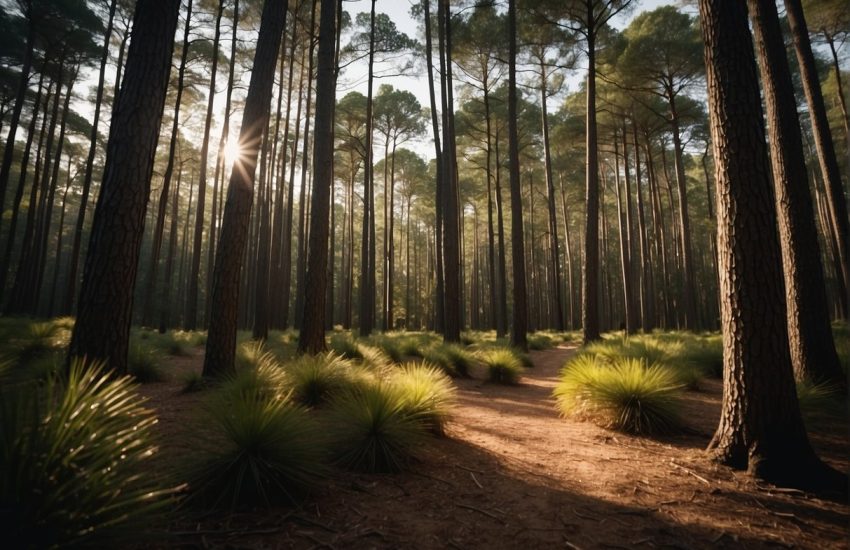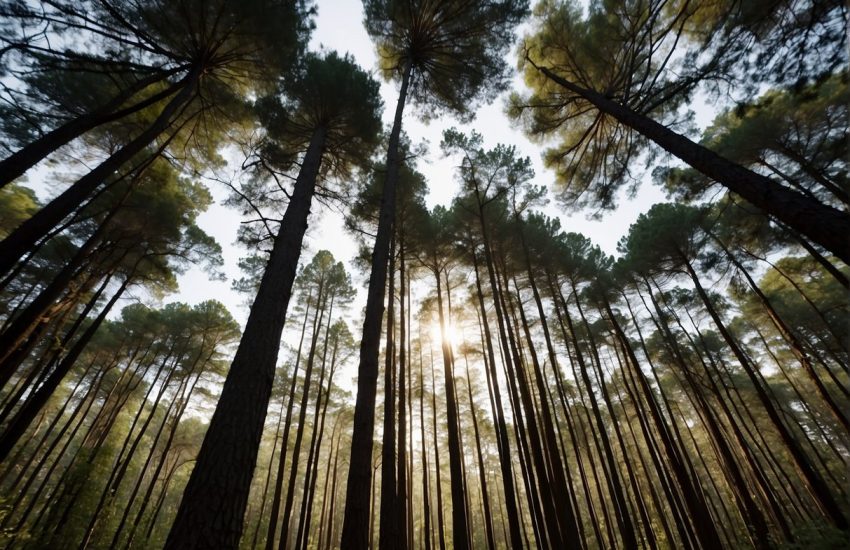Pine Trees of California: A Guide to Species and Distribution
Pine trees are a vital component of California’s ecosystem. These trees are evergreen and can be found throughout the state, from the northern reaches of the Sierra Nevada Mountains to the southernmost deserts. They provide habitat for a wide range of wildlife, including birds, squirrels, and deer. Additionally, pine trees help to stabilize the soil, prevent erosion, and provide shade.

There are many different types of pine trees that grow in California. Some of the most common include the Jeffrey pine, the Coulter pine, and the Monterey pine. Each of these trees has its own unique characteristics, such as the size of its cones, the shape of its needles, and the color of its bark. Pine trees are an important part of California’s natural heritage and are celebrated for their beauty and resilience.
Species and Distribution
Major Pine Species
California is home to a diverse group of pine trees, each with unique characteristics and adaptations to their environment. Some of the major pine species found in California include Jeffrey Pine, Bishop Pine, Ponderosa Pine, Sugar Pine, Coulter Pine, Torrey Pine, Lodgepole Pine, Monterey Pine, Knobcone Pine, Western White Pine, Foothill Pine, Shore Pine, Whitebark Pine, Foxtail Pine, Gray Pine, and others.
Jeffrey Pine is a common species found in the Sierra Nevada, Coastal Areas, Foothills, and Mountains of California. It is known for its tall stature and the pleasant vanilla-like scent of its bark. Bishop Pine, on the other hand, is found in the Coastal Region of California and is adapted to grow in sandy soils near the ocean. Ponderosa Pine is another common species found in the Foothills and Mountains of California. It is known for its thick bark that helps it survive wildfires.
Sugar Pine is the largest pine species in the world and is found in the Sierra Nevada Mountains of California. Coulter Pine is another large species found in the Foothills and Mountains of California. It is known for its large and heavy cones that can weigh up to 10 pounds each. Torrey Pine is a rare species found in the Coastal Region of Southern California. It is adapted to grow in sandy soils and is one of the rarest pines in the world.
Geographic Spread
Pine trees are found throughout California, from the urban areas to the remote mountainous regions. The distribution of pine species is largely determined by factors such as climate, elevation, and soil type. For example, Jeffrey Pine is found in the Sierra Nevada, Coastal Areas, Foothills, and Mountains of California, while Bishop Pine is found only in the Coastal Region of California.
Climate change is also affecting the distribution of pine trees in California. As temperatures increase, some species may be pushed out of their current habitats and forced to migrate to cooler areas. This could have a significant impact on the overall distribution and diversity of pine trees in California.
In conclusion, California is home to a diverse group of pine species, each with unique adaptations and characteristics. Pine trees can be found throughout the state, from the urban areas to the remote mountainous regions. The distribution of pine species is largely determined by factors such as climate, elevation, and soil type.
Ecology and Environmental Impact
Adaptations to Environment
Pine trees are native evergreen trees to California and are well adapted to the state’s Mediterranean climate. They are drought-tolerant species that are able to survive in sandy soil with full sun exposure. These trees have developed several adaptations to survive in California’s dry climate, such as deep root systems that can reach water sources underground, and needle-like leaves that help them conserve water.
In addition to their ability to survive in drought conditions, pine trees have also adapted to California’s frequent wildfires. Some species, such as the knobcone pine, have serotinous cones that are sealed with resin and require the heat of a fire to open and release their seeds. Other species, such as the Coulter pine, have thick bark that helps protect them from the heat of a fire.
Conservation and Threats
Pine trees play an important role in California’s ecosystem, providing habitat for wildlife and helping to reduce greenhouse gas emissions. However, these trees are also threatened by several factors, including climate change, drought, and pests.
Climate change is causing warmer temperatures and more frequent droughts in California, making it difficult for pine trees to survive. In addition, pests such as the mountain pine beetle and the western pine beetle have caused significant damage to pine tree populations in recent years.
Conservation efforts are underway to protect California’s pine trees. These efforts include planting drought-tolerant species, reducing greenhouse gas emissions, and managing wildfires to prevent them from becoming too large and destructive.
Overall, pine trees are an important part of California’s ecosystem and are well adapted to the state’s climate. However, they face several threats that must be addressed to ensure their survival in the future.


